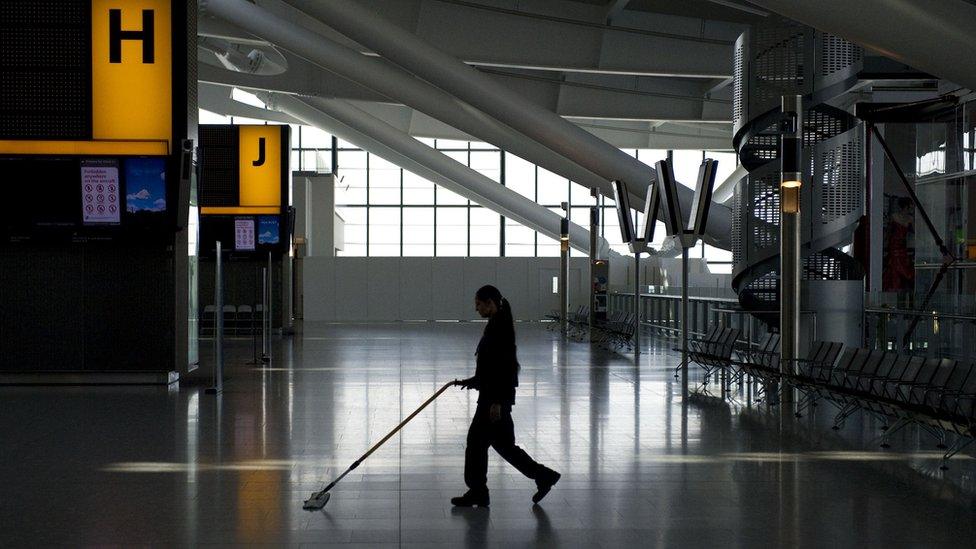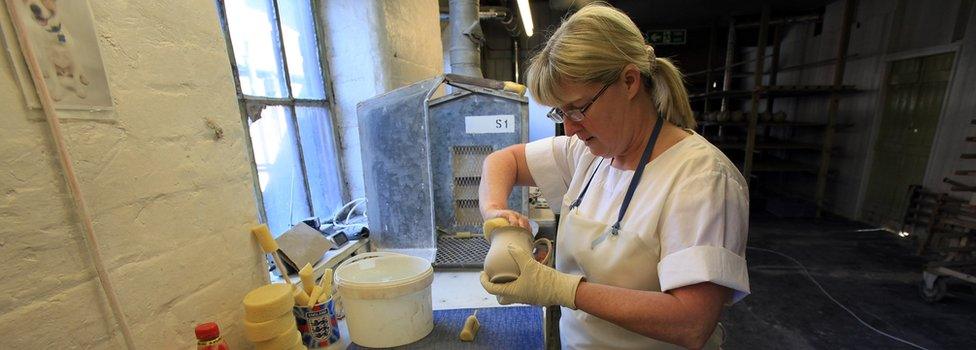National Living Wage benefits 'to vary across the country'
- Published

Female workers will be among the biggest winners from the National Living Wage
The number of workers benefiting from the new National Living Wage (NLW) will vary dramatically across the country, according to a think tank.
The Resolution Foundation said that in some parts of Britain as much as a third of the workforce will get a pay rise.
But workers elsewhere will see little difference after the NLW is introduced on 1 April, it said.
Under the NLW, millions of workers over 25 will see their minimum pay rate rise from £6.70 to £7.20.
Those under the age of 25 will continue to receive the lower pay rates of the National Minimum Wage (NMW).
Among the "hotspots" is the City of Sheffield, where 22% of workers are set for a pay rise, according to the Resolution Foundation research.
However workers in parts of London and the South East are likely to see little benefit.
Just 3% of employees in the City of London will see an increase in their wages.
At the same time the Office for Budget Responsibility (OBR) has predicted that tens of thousands of workers could lose their jobs - or see their hours reduced - as employers try to compensate for the extra cost.


The National Living Wage and You: see more details here

Wage boost
"Britain's new legal wage floor will be felt throughout the country, but its impact will be bigger in some areas than others," said Torsten Bell, director of the Resolution Foundation.
It said workers in Torridge in Devon were set to be the biggest winners, with 35% of them getting a pay rise next month.
Overall it said that wages in Torridge were likely to be boosted by around £2m a year.
The Resolution Foundation believes that 4.5 million workers will benefit from the NLW this year.
Officially the OBR has calculated that 1.3m workers will see an immediate pay rise, rising to 2.9m by 2020.
When the "spill-over" effect is included - as other workers get a pay rise to maintain pay differentials - as many as 6m could see an increase in pay by 2020.
However the OBR has said that 60,000 workers could lose their jobs as a result of the NLW.
Government advisors have said that the overall cost to business could be more than £1bn this year.
Some workers could also be given shorter hours, as employers try to balance their books.
Three groups of workers in particular will benefit from the NLW: Women, who are over-represented in minimum wage jobs; workers between the ages of 25 and 30; and people still working over the age of 66.
The Resolution Foundation data covers Britain only - although the NLW applies across the whole of the UK.